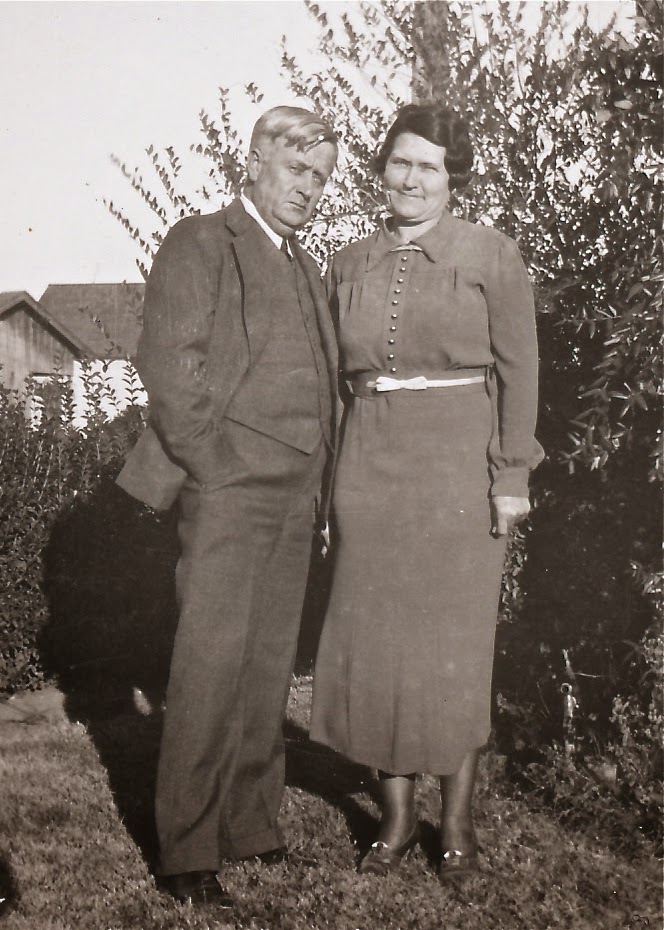Sometime during the month of May 1865, my Great Grandfather Nathan Richardson Oakes, who served throughout the War Between the States in Lowrey's Regiment, the renouned 32nd Mississippi, made his way home to Kossuth, Mississippi following the army's surrender in North Carolina. He was in a hurry to get home, because only a month after leaving North Carolina, he married his hometown sweetheart.
150 years ago on today's date, my great grandparents tied the knot. Great Grandfather Oakes, 3 months shy of his 21st birthday, married 18 year-old Martha Ellen Turner. She was the sister of Great Grandfather's comrade in arms, "Billy" Turner, who also served in Co. D of the 32nd Mississippi Regiment.
150 years ago on today's date, my great grandparents tied the knot. Great Grandfather Oakes, 3 months shy of his 21st birthday, married 18 year-old Martha Ellen Turner. She was the sister of Great Grandfather's comrade in arms, "Billy" Turner, who also served in Co. D of the 32nd Mississippi Regiment.
The marriage on this date brings Pvt. Nathan R. Oakes full circle, from his 60-day enlistment in his state's militia in 1861, and his subsequent enlistment into the Confederate Army at Corinth, Mississippi on March 1862, to his return home following the surrender and disbanding of the army at Greensboro, North Carolina on May 1, 1865. The long and destructive war now over, the young couple, like thousands of other Southern farmers, focused on restoring their land and making it productive again.
In the years that followed, Great Grandfather Oakes remained active in various Confederate reunions. Even after he moved his family to Texas in the 1894, he continued to reflect on his war experiences and even wrote a couple of letters to the editor of the Confederate Veteran magazine, which were published in 1899-1900.
Great Grandfather Oakes was 62 when he died in 1908. His wife lived until 1925. The two are buried side by side in the Santa Ana Cemetery. Great Grandfather never applied for a veteran's pension. However, after his death, my great grandmother's situation gradually declined. So in 1925, she applied for a war widow's pension, from which document I was able to confirm a few key details about Great Grandfather's war service and their life in Texas. Her pension was approved. However, she died 5 months later.
In the years that followed, Great Grandfather Oakes remained active in various Confederate reunions. Even after he moved his family to Texas in the 1894, he continued to reflect on his war experiences and even wrote a couple of letters to the editor of the Confederate Veteran magazine, which were published in 1899-1900.
 |
| My great grandparents, Nathan and Martha Oakes, and their family in front of their home in 1897, after moving to Texas from Mississippi |
Great Grandfather Oakes was 62 when he died in 1908. His wife lived until 1925. The two are buried side by side in the Santa Ana Cemetery. Great Grandfather never applied for a veteran's pension. However, after his death, my great grandmother's situation gradually declined. So in 1925, she applied for a war widow's pension, from which document I was able to confirm a few key details about Great Grandfather's war service and their life in Texas. Her pension was approved. However, she died 5 months later.
Nathan and Martha Oakes had 10 children, although 3 died in early childhood. The youngest, my grandfather, Johnnie McPeters Oakes, was born 23 years into their 42-year marriage, on June 30, 1888.
My great grandparents Nathan and Martha Ellen Oakes
with their children, cir. 1889. Baby (lower right) is my grandfather John Oakes. |
Grandfather John Oakes was born in Kossuth, but when he was 6, the family moved to Texas, finally settling in Coleman County. There, years later, he married Mary Kate Neal, my grandmother. She was the granddaughter of Confederate veteran David Crockett Neal from Tennessee, who served in 6th Tennessee Cavalry Regiment. Grandmother Mary Kate Oakes died in 1937 when my mom, her youngest child, was only 10.
After Grandmother's death, Grandfather Oakes moved to San Diego, California, where he worked in the aircraft industry supporting the Allied victory in WWII. He died on September 9, 1945, only a week after Japan's official surrender. My mom, also employed in the war effort, accompanied his body to Texas for burial in the family plot in the Santa Ana Cemetery. There he rests next to my grandmother, near both of their parents and other family members.
 |
| My grandparents John and Mary Kate Oakes, Santa Ana, Texas |
After Grandmother's death, Grandfather Oakes moved to San Diego, California, where he worked in the aircraft industry supporting the Allied victory in WWII. He died on September 9, 1945, only a week after Japan's official surrender. My mom, also employed in the war effort, accompanied his body to Texas for burial in the family plot in the Santa Ana Cemetery. There he rests next to my grandmother, near both of their parents and other family members.
 |
| Nathan Oakes's granddaughter Marjorie, with her husband Frank Dolan, son of Klondike gold miner, logger, and adventurer (but those are topics for another story) |













